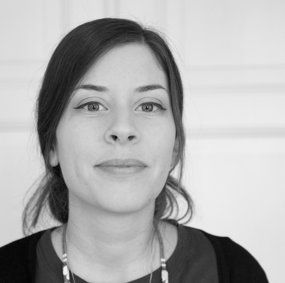My dilemma: Shrunken heads not a selfie opportunity
In Bergen, museum visitors have been able to see a head taken as a war trophy. Curator Åshild Sunde Feyling Thorsen was concerned about creating stereotypical perceptions of the people of the Amazon.


This article was first published in Norwegian on October 11 2021.
When a newly refurbished university museum opened its doors in 2019, various exciting natural history exhibitions were on display. The so-called shrunken head, or tsantsa, could easily have been used to lure curious souls to the museum. Instead, it was discreetly placed in the exhibition room under subdued lighting.
‘We didn't want to reduce the head to a sensational oddity that people posed beside to take a selfie’, says Thorsen.
Thorsen was responsible for the ethical assessments of the human material that was planned for the new exhibitions.
‘I quickly realised that, although it was all human material, every single object would require a different kind of ethical reflection. There’s a big difference between an 8,000-year-old skull from Western Norway and a South American tsantsa from the interwar period’, says the curator.
It was the latter of the two that would cause the most ethical headaches.
Trade in heads
In the 20th century, heads were taken as war booty by the indigenous Shuar people. The skull and brain were removed as part of a special process, before various rituals were held to shape and shrink the head.
‘When the rituals were over, the head itself no longer had any great significance, and could either be thrown away or exchanged for weapons or other goods’, says Thorsen.
The shrunken head at the University Museum in Bergen was probably collected during the interwar period. Back then, trade in tsantsa was still legal and partly controlled by Shuar groups themselves. But was it acceptable to exhibit it in a display case in a Norwegian museum decades later?
‘We need to have a conscious understanding of what we exhibit, and how we represent other cultures. The head originated from a relatively recent practice, so I was afraid that we would reinforce the headhunter cliché about ethnic groups in the Amazon’, explains Thorsen.
From sensationalism to reflection
The curator familiarised herself with the Shuar and Achuar culture and considered the ethical issues before discussing them with colleagues and the National Committee for Research Ethics on Human Remains. The way the head was to be presented, and the context in which it was to be exhibited tipped the scales towards putting it on show.
Thorsen believes that museums today have a more reflective and analytical approach to exibiting ethnographic objects, and that nowadays they tend to avoid sensational exhibitions.
‘For a period up to 2014, the tsantsa head was exhibited at the museum in a diorama depicting Shuar culture, and many people remember this well. This time we wanted to put it into more of a history of science and philosophical context. We wanted to show the research process and method, and how science’s interpretation of objects can change’, she explains.
The exhibition was also intended to stimulate reflection on some of the questions the curator had been pondering: How do we now regard yesteryear’s collection of ethnographic objects? And what does the public think about exhibiting objects that have been sacred or linked to religious life?
Thorsen is not aware of any selfie-posing or negative reactions by visitors.
‘I think the public has understood our intention’, she concludes.
Translated by Akasie språktjenester AS.